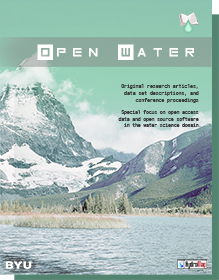Keywords
Hydrological model, SWAT, Open source data, Open source software, DEM
Abstract
Hydrological modeling is a powerful technique for hydrologic system investigation for research hydrologists, and practicing water resources planners and engineers involved in the planning and development of an integrated approach for the management of water resources. Hydrological models are based on our understanding of the physics of the hydrological processes which control catchment response and use physically based equations to describe these processes. Some typical examples of field applications of hydrologic modeling includes the study of the effect of climate and land use changes, the prediction of the behavior of ungauged catchments, spatial variability in catchment inputs and outputs, movement of pollutants and sediment, etc. Hydrological models are data driven; and thus, scarcity of data often hinders model development. Various ideal resources are nowadays available online for geographic and climatic research. In this paper we discuss the data challenges when building typical hydrological models and the growth of freely available data and open source solutions; we built a model based on completely open source data/software and calibrated the model. The upper part of Mendoza river watershed located in Argentina was studied where snow and glacier melt runoff makes a significant contribution to the stream flow process. The Soil and Water Assessment Tool (SWAT) was used to build the model utilizing various data sources from NASA, GRDC, and other online sources. The data required for model development is either geographic or climatic in nature. Geographical data, such as DEM, land use, and soil maps were taken obtained from SRTM, HydroSHED, and FAO. The climatic data were taken from NCDC. The filtering process was done with the open source statistical programming tool R. Stream flow simulations were done with daily time steps. The model-generated runoff had a very close match with the observed runoff both visually and statistically [NSE=0.69, MSE=12, R2=70]. Information obtained from this study can be applicable in any part of the world for watershed planning and management, especially in data sparse regions, such as the Ganges-Brahmaputra-Meghna basins.
BYU ScholarsArchive Citation
Rahman, Kazi; Ray, Nicolas; Giuliani, Gregory; Escobar, Rocio; Girón, Gissela; Schwank, Julia; George, Chris; and Lehmann, Anthony
(2013)
"Stepping towards open source hydrological modeling: problems and prospects,"
Open Water Journal: Vol. 2:
Iss.
1, Article 35.
Available at:
https://scholarsarchive.byu.edu/openwater/vol2/iss1/35
